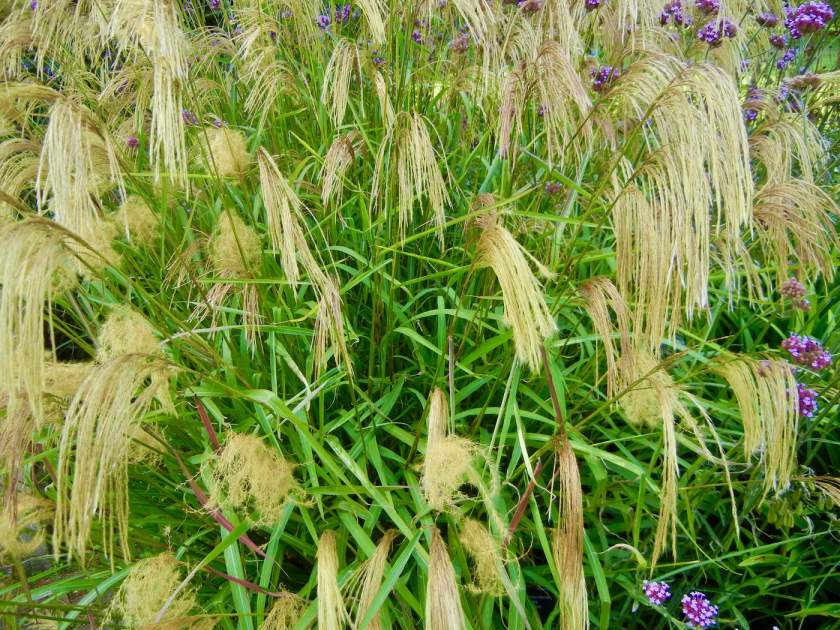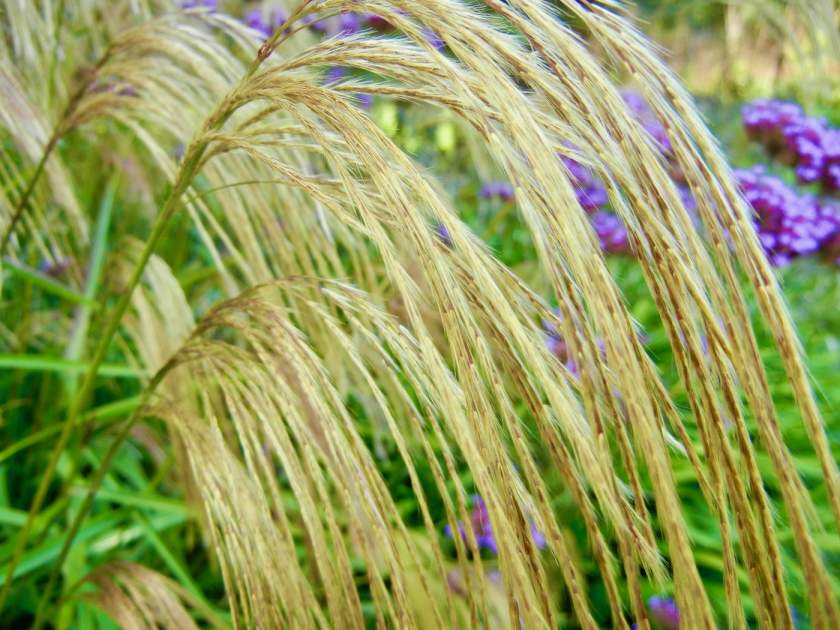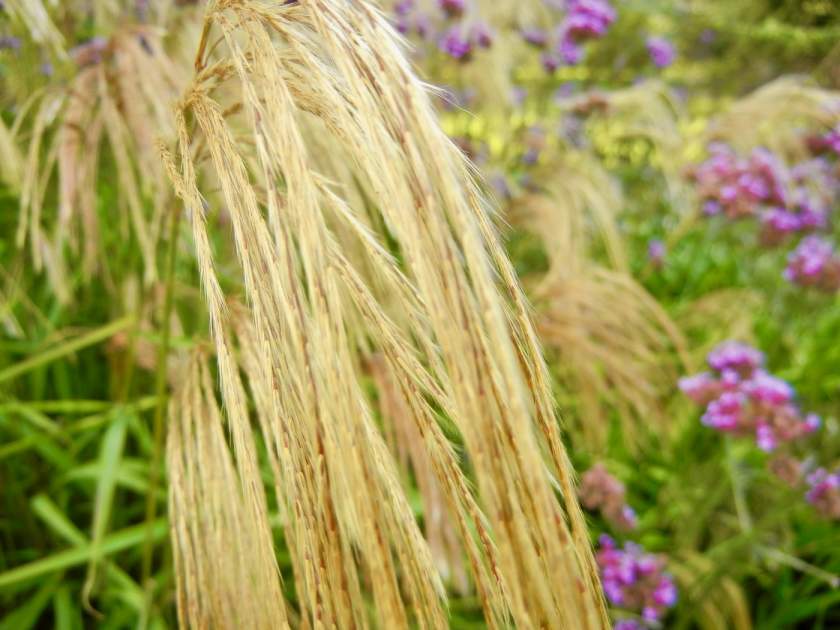Miscanthus nepalensis: A Graceful Addition to Your Garden
Miscanthus nepalensis, commonly known as Himalayan Fairy Grass, is a captivating ornamental grass that hails from the Poaceae family. This stunning perennial plant is native to the Himalayan region, where it graces mountain slopes in countries like China, Bhutan, India, Myanmar, and Nepal. Miscanthus nepalensis enchants with its delicate, silky, and creamy flower plumes that elegantly arch above its lush green foliage. Its unique beauty and long-lasting interest make it an ideal focal point in any garden, adding an element of grace and charm to the landscape.
Characteristics: Leaves and Flowers Miscanthus nepalensis forms a lovely, dense, and fountain-like clump that can reach a height of 4 to 5 feet (120-150 cm) and a width of 3 to 4 feet (90-120 cm). The plant boasts slender, long leaves that showcase a rich green color during the summer, transforming into a warm yellow hue in the fall. In late summer, the grass produces enchanting fluffy, white flower plumes that further enhance its allure.
Background: Family and Native Habitat As a member of the Poaceae family, Miscanthus nepalensis finds its origins in the picturesque Himalayas, thriving on mountainous slopes across China, Bhutan, India, Myanmar, and Nepal. Its resilience and adaptability to varying conditions make it a sought-after ornamental grass for gardens worldwide.
Cultivation of Miscanthus nepalensis:
Sunlight: Miscanthus nepalensis flourishes when exposed to full sun, making it a perfect choice for sunny spots in your garden.
Soil: Moderately fertile, well-drained soils provide an ideal environment for the growth of Miscanthus nepalensis. Ensuring proper drainage will protect the plant from excessive winter moisture.
Watering: This grass is drought-tolerant and requires only moderate watering. During hot, dry weather, water the plant deeply once a week or whenever the soil becomes dry.
Hardiness Zone: Miscanthus nepalensis is best suited for hardiness zones 6 to 9.
Pest and Disease Resistance: This hardy grass is relatively resistant to pests and diseases. However, it may attract birds while keeping deer and rabbits at bay.
Fertilizer: Miscanthus nepalensis does not require much fertilizer. A light application of fertilizer in the spring will help the plant to grow and flower.
Propagation:
You can propagate Miscanthus nepalensis through seeds or division.
Seed: Sow the seeds in a cold frame during spring, and ensure the soil remains moist until germination, which usually occurs within 1 to 2 weeks.
Division: In either fall or spring, gently dig up the plant and separate the roots into two or three sections. Replant the divisions in a new location with well-drained soil and abundant sunlight.
Ideal Uses: The versatile Miscanthus nepalensis serves as a graceful accent plant, complementing borders, cottage gardens, and prairie plantings with its elegance. Its visual appeal makes it a lovely addition to any landscape.
Maintenance
Weeding: Miscanthus nepalensis is a relatively low-maintenance plant, but you will need to weed around it occasionally.
Pruning: Miscanthus nepalensis does not need to be pruned often. In the spring, you can remove any dead or damaged leaves. In the fall, you can cut the plant back to the ground.
Mulching: Mulching around the plant will help to keep the soil moist and prevent weeds.
Protecting from Pests and Diseases: Miscanthus nepalensis is generally resistant to pests and diseases, but it can be susceptible to rust and powdery mildew. If you see any signs of pests or diseases, you should treat the plant immediately.
Miscanthus nepalensis, also known as Himalayan Fairy Grass, is a captivating ornamental grass that brings an air of elegance and charm to any garden. With its beautiful flower plumes and gracefully arching foliage, this grass becomes a stunning focal point in the landscape. Its adaptability to varying conditions, low maintenance needs, and versatility in garden settings make it a favorite among gardeners. Whether as an accent plant or for erosion control, Miscanthus nepalensis is a welcome addition to gardens seeking a touch of natural splendor.






